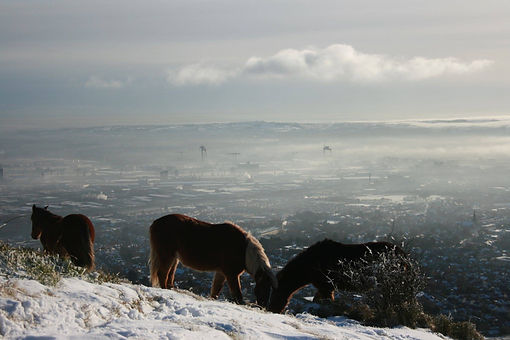Cave Hill Conservation Campaign
Established in 1989
Awarded The Queen's Award for Voluntary Service in 2019.


Habitat and Wildlife


The Hill contains a variety of habitats. These include heather moorland, rocky outcrops and mixed woodland. Most of the trees are less than 100 years old, but there are many mature specimens. There has been an extensive planting of native species, especially oak, within the last 20 years. The trees are mostly deciduous - Ash, Beech, Birch and Rowan are numerous - but there is also a good population of mature Scots pine. Smaller growing species include Hazel, Elder, Hawthorn, Blackberry and Ferns. The area is rich in wildflowers - the better-known species include bluebells, primroses, wild garlic, wood anemone, lesser celandine and herb robert. The Hazlewood area above the zoo is one of the most important habitats on Cave Hill.
There is also a considerable range of wildlife. Mammal species include foxes, badgers, grey squirrels, hedgehogs, rabbits, shrews and bats. Bird species include owls, kestrels and sparrowhawks as well as the full range of woodland birds such as blackbirds, thrushes, finches, tits, robins, dunnocks and wrens. In summer, there are swallows and house martins. The heather moorland has skylarks, wheatears and pipits.
The Plight of the Common Lizard
In 2013, there was a major fire in the great limestone quarry on Cave Hill. Apart from other damage, the fire destroyed an area where we had photographed lizards. The suspicion is that a colony of these uncommon creatures has been wiped out. It might give vandals cause for thought that their behaviour can have such a damaging effect on innocent creatures.